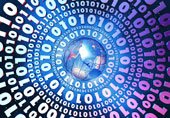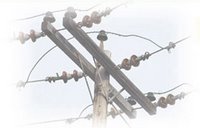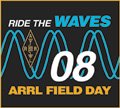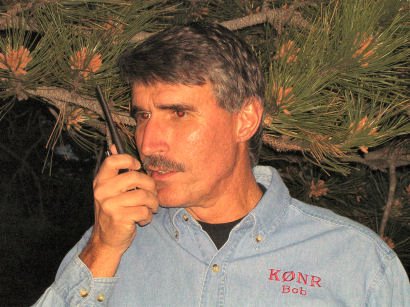
Disclaimer: I am a little ticked off that my digital scanner (radio receiver, not a graphics scanner) decided to toss its cookies today and lose all of its programmed data. The day before, my Yaesu FT-8900 got amnesia, losing all of its channels. (It seems to not appreciate the voltage dip when the car engine starts.) This reminds me of when iTunes discarded my podcasts about 3 weeks ago. Which reminds me of when
my computer hard drive failed, putting my entire digital presence into the bit bucket.
I had always resisted using software to program my radios. When our public service agencies switched to 800 MHz trunked digital, I didn't have a choice anymore for the scanner. The complexity of that system requires a software program to manage the channels. I also tried to avoid using software to program my amateur transceivers. (Old Guy Talk: Back in the old days, we only had a band switch and one big VFO knob to turn and that was plenty good enough.) Slowly, but surely, the huge number of memories and features available have teased me into buying the software to keep track of it all. I don't mind paying for the software...typically, the programs are a bargain.
I do object to the time it takes to manage this stuff. You might think that there would be a standard file format that stores my favorite frequencies, transmit offset, CTCSS tone and channel labels so that I don't have to enter them every time. No, that would make too much sense.
What other cute little electronic devices require their own database? I already mentioned iTunes and MP3 players, where the songs are just bits on a computer. (Not your old 8-track tapes anymore, is it?) My GPS receiver has its own set of maps that demand to be cared for and fed to keep the little device happy and useful. (The other day, a bit in the GPS got set that told it to ignore the maps that were loaded. I could see that the maps were there but the GPS was apparently not using them. A master reset and reload eventually cured the problem.) The GPS also makes use of my favorite set of waypoints that I maintain...carefully stored on The Hard Drive, waiting for the next disk crash.
Oh, and don't forget digital cameras....they are the Masters of Data Creation. One click of the camera can generate a file with a million or two bytes. A day of photography can fill up a few gigs of storage with no effort at all. All of these precious photos need to be stored somewhere to be preserved for posterity. (Should I put posterity on The Hard Drive?)
There is just too much data in my life, and the trend line is increasing. Keep in mind that this data is the kind that you never really see. You can't see files on a hard drive, you can't see mp3 files on an iPod, you can't see the bits programmed into my scanner. Oh sure, you can see something that
pretends to represent the actual data....The Hard Drive lets you display a Word document on your screen and print it out. It is supposed to be the same as the file on The Hard Drive, but that is just an approximation....or maybe an illusion. Another reason bits are so hard to manage....they are invisible.
Back to the scanner...I had the configuration file on The Hard Drive (and backed up via
Carbonite, just in case.) The Win96 software that programs the RadShack PRO-96 scanner was a victim of the recent hard drive failure, so I had to reinstall it. The program refused to run until I found the magic registration key that proves I paid for the software. No problem...found that on The Hard Drive as well and off we go. Then, the PC had trouble talking to the scanner via the COM port, mostly because there is no COM port on the PC. That is, I needed to use a USB-to-Serial Port converter. (Insert another poorly documented device of questionable origin.) Can we just have USB ports on all data-hungry electronic devices? After much fiddling around, I got the scanner to load all of the data.
Any one of these things is not that big of a deal. I can deal with one or two special programs and cables. But after being surrounded by these self-centered little devices that don't play nicely, it really starts to wear you down. Clearly, the amount of data is going to continue to increase and
more devices are going to take advantage of it. So don't count on the problem getting any simpler. Ever.
So what's the solution?
- Electronic devices should use standard data formats that share easily from device to device. They shouldn't insist on their own native format. Sharing data is good.
- These devices should use standard interfaces and memory cards so that moving data around is trivial. Get rid of the proprietary cables.
- The software that handles the data should be designed and tested for maximum usability using established human factors methods. Every feature should work with minimal effort for the end user.
- Last but Most Important: these devices shouldn't ever lose their memory. Bad, bad, bad, bad.
There, I feel much better now.
-- 73, Bob K0NR
 Here is another milestone in my D-STAR experience....my first repeater contact using the technology. (I had previously been using D-STAR on simplex.) There are no D-STAR machines within range of my house, but there is one west of Denver (the Colorado D-STAR Association, W0CDS).
Here is another milestone in my D-STAR experience....my first repeater contact using the technology. (I had previously been using D-STAR on simplex.) There are no D-STAR machines within range of my house, but there is one west of Denver (the Colorado D-STAR Association, W0CDS).




